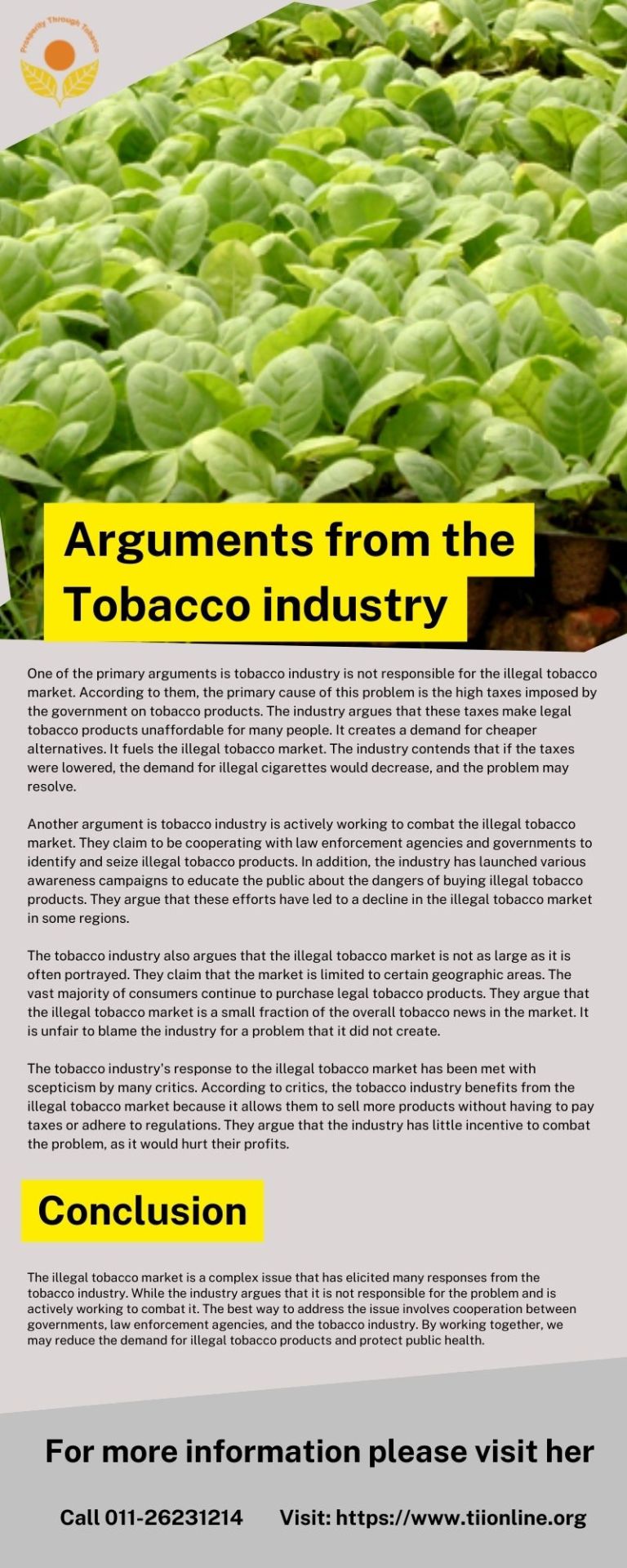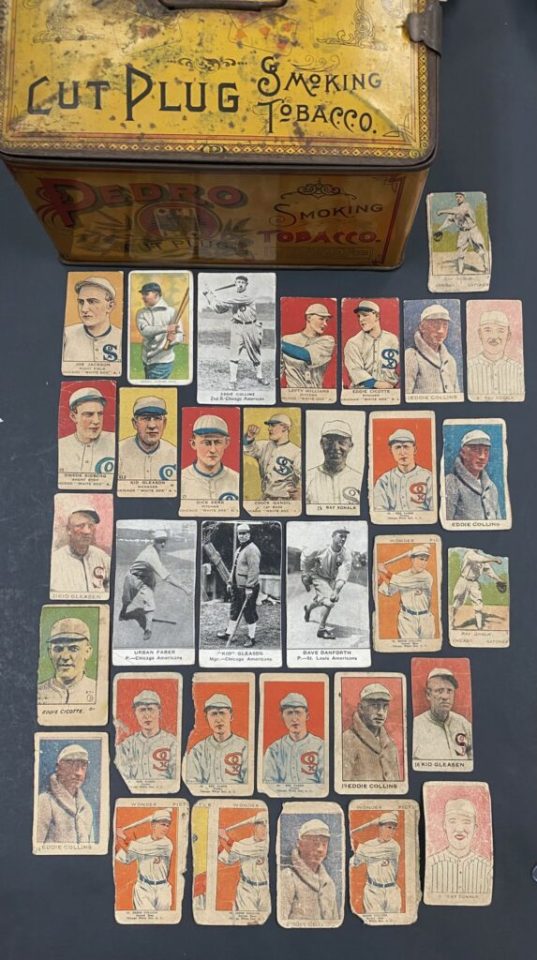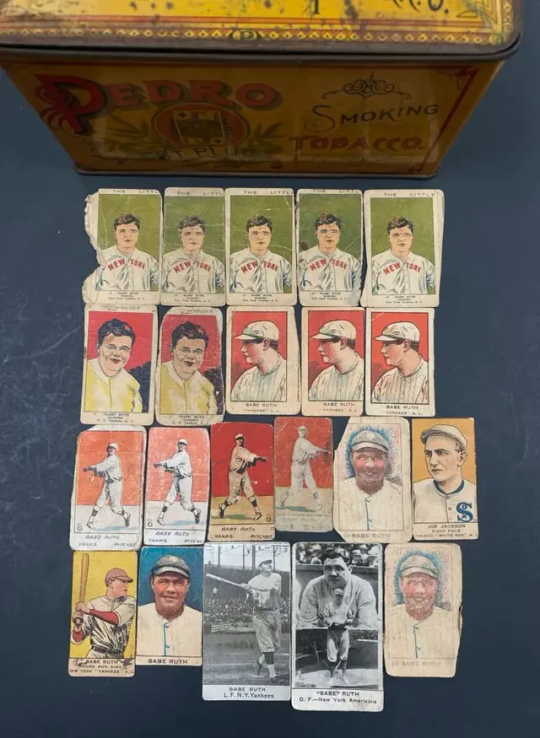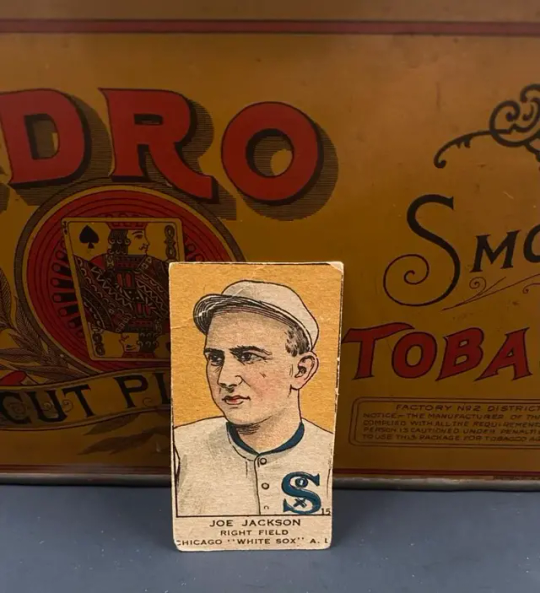#tobacco news
Text

Illegal Tobacco Market Trade – What Does The Tobacco Industry Say?
The illegal tobacco market refers to the trade and sale of illegal tobacco products. These products don't have legal authentication from the government. The tobacco industry has responded to these allegations in various ways. In this article, we will explore the tobacco industry's perspective on the illegal tobacco industry. For more information please visit the website now.
0 notes
Text

#animated gif#animated gifs#gif#gifs#old advertisements#old ads#retro#vhs#90s#monkey#smoking#tobacco#matching outfits#the eigth drunkest news team in the tri-state area
132 notes
·
View notes
Text


havent drawn my baby momma in awhile
#none of sarahs children inherited her sexyness and tobacco addiction#aletus' lanky virgin dna is strong#fnv#fallout#fallout new vegas#oc: sarah#vera keyes dress
72 notes
·
View notes
Text
The Prince Edward Island government is hoping a ban on tobacco sales to anyone born after a certain date will help create a new generation of smoke-free Islanders.
The idea is part of the province's new Live Well Action Plan released Tuesday.
If the idea turns into action, the government would select a watershed year — 2009, for example — and anyone born after it would be prohibited from ever legally buying tobacco products on P.E.I.
Continue Reading.
Tagging: @newsfromstolenland
61 notes
·
View notes
Text

Unusual and busy 1951 advertisement for Lucky Strike cigarettes
#1951#lucky strike#tobacco#vintage tobacco#smoking#ski#sking#actor#new orleans#vintageadsmakemehappy#vintage magazine#vintage advertising#magazine#advertising#1950s#50s#american
72 notes
·
View notes
Link
272 notes
·
View notes
Text

his first ever binder. ever
#hance money bought the binder…#he probably hasn’t gotten a new one since tbh#happy cat#my art#furry art#anthro art#furry#anthro#oc art#oc#doodlings#traditional art#ok need to stop drawing and actually smoke my morning tobacco
90 notes
·
View notes
Text
By Topher L. McDougal
California will be the first U.S. state to charge an excise tax on guns and ammunition, starting in July. The new tax — an 11% levy on each sale — will come on top of federal excise taxes of 10% or 11% for firearms and California’s 6% sales tax.
The National Rifle Assn. has characterized the law that allows this new tax, the Gun Violence Prevention and School Safety Act, as an affront to the Constitution. But the reaction from the gun lobby and firearms manufacturers may hint at something else: the effect that the measure, which is aimed at reducing gun violence, may have on sales.
For the record:
10:20 a.m. May 21, 2024 — An earlier version of this piece stated that U.S. gun sales grew tenfold over the past 20 years. They grew fourfold.
One way to think about the law’s ramifications is to compare state tax policies on firearms with those on alcohol and tobacco products. It’s not for nothing that these all appear in the name of the Bureau of Alcohol, Tobacco, Firearms and Explosives. The ATF focuses on those products because, while legal, they can cause significant harm to society in the form of drunken driving, for example, or cancer-causing addictions. They also have a common history: All have been associated with criminal organizations seeking to profit from illicit markets.
Alcohol and tobacco products are thus usually subject to state excise taxes. By making a given product more expensive, this type of tax leads people to buy less of it, reducing the harm to society while generating tax revenue that the state can theoretically use to offset those harms that still accrue.
California, for instance, imposes a $2.87 excise tax on each pack of cigarettes. That tax is higher than the national average but much lower than New York’s $5.35 levy. California also imposed a vaping excise tax of 12.5% in 2021.
Of the four ATF product families, firearms have enjoyed the absence of any state excise taxes. Until now.
Anti-gun advocates and policy analysts have long called for the firearm industry to be subject to the same types of taxes as alcohol and tobacco given the harms that firearms cause. The national rate of gun homicides in 2021 was 4.5 per 100,000 people, eight times higher than Canada’s rate and 77 times that of Germany. It translates into 13,000 lives lost every year.
Additionally, nearly 25,000 Americans die from firearms suicide each year. Moreover, more people suffer nonfatal firearm injuries than die by guns, according to the Centers for Disease Control and Prevention.
Gun deaths and injuries aren’t just tragic — they’re expensive. One economist estimated the benefit-cost ratio of the U.S. firearms industry at roughly 0.65 in 2009. That means for every 65¢ it generates for the economy, the industry produces $1 of costs. And that calculation didn’t include nonfatal injuries within the U.S., or the cost of firearm harms occurring outside the country with U.S.-sold weapons.
U.S. gun sales have grown fourfold over the past 20 years to about 20 million guns annually, and they’re now deadlier and more expensive than ever. California is making sure they are taxed accordingly.
And what should that tax amount to? There’s an argument to be made that firearms should be taxed at a higher level than alcohol and tobacco, which are consumable products that disappear as soon as they’ve been used — guns stick around. They accumulate and can continue to impose costs long after they’re first sold.
When the new law takes effect in July, California will tax firearms at about the level of alcohol. But the state would have to apply an excise tax of an additional 26% to equal its effective tax on tobacco.
It’s unclear how the new tax will affect gun violence. In theory, it should be highly effective. In 2023, some colleagues and I modeled the U.S. market for firearms and determined that for every 1% increase in price, demand decreases by 2.6%. This means that the market should be very sensitive to tax increases.
Using these figures, another colleague recently estimated that the California excise tax would reduce gun sales by 30% to 44%. If applied across the country, the tax could generate an additional $1.5 billion to $1.9 billion in government revenue.
But a problem may come from surrounding states: It’s already easy to illegally transport guns bought in Nevada, where laws are more lax, to California. But there’s some evidence that suggests our state’s new policy won’t be neutralized by its neighbors.
When the federal assault weapons ban expired in 2004, making it much easier to buy AR- and AK-style rifles across much of the U.S., gun murders in Mexico skyrocketed. Two studies show the exception was the Mexican state of Baja California, right across the border from California, which had kept its state-level assault-weapons ban in place.
Gun seizures in Mexico show that all four U.S. states bordering Mexico rank in the top five state sources of U.S.-sold guns in Mexico. But California contributes 75% less than its population and proximity would suggest it should.
So, California laws seem to already be making a difference in reducing gun violence. The excise tax could accomplish still more. If it does, other states may follow California’s lead and work to reduce firearm violence by hitting gun manufacturers at the spot they value most — their bank accounts.
#us politics#news#los angeles times#op ed#2024#gun rights#gun violence#2nd amendment#taxes#excise tax#Gun Violence Prevention and School Safety Act#us constitution#national rifle association#Bureau of Alcohol Tobacco Firearms and Explosives#california#gun crime#gun control
26 notes
·
View notes
Text
"A new World Health Organization (WHO) report highlights that 5.6 billion people – 71% of the world’s population – are now protected with at least one best practice policy to help save lives from deadly tobacco – five times more than in 2007.
[Note: Going by the math, that means just (roughly) 14% of people were covered by tobacco control policies in 2007. Talk about a huge increase!]
In the last 15 years since WHO’s MPOWER tobacco control measures were introduced globally, smoking rates have fallen. Without this decline there would be an estimated 300 million more smokers in the world today.
This WHO Report on the global tobacco epidemic, supported by Bloomberg Philanthropies, is focused on protecting the public from second-hand smoke, highlighting that almost 40% of countries now have completely smoke-free indoor public places.
The report rates country progress in tobacco control and shows that two more countries, Mauritius and the Netherlands, have achieved best-practice level in all MPOWER measures, a feat that only Brazil and Türkiye had accomplished until now.
[Note: In late 2021, the former Turkey changed official its name to Türkiye, shedding the English/Anglicized spelling.]
“These data show that slowly but surely, more and more people are being protected from the harms of tobacco by WHO’s evidence-based best-practice policies,” said Dr Tedros Adhanom Ghebreyesus, WHO Director-General...
Smoke-free public spaces is just one policy in the set of effective tobacco control measures, MPOWER, to help countries implement the WHO Framework Convention on Tobacco Control and curb the tobacco epidemic.
Smoke-free environments help people breathe clean air, shield the public from deadly second-hand smoke, motivate people to quit, denormalize smoking and help prevent young people from ever starting to smoke or use e-cigarettes.
“While smoking rates have been going down, tobacco is still the leading cause of preventable death in the world – largely due to relentless marketing campaigns by the tobacco industry,” said Michael R. Bloomberg, WHO Global Ambassador for Noncommunicable Diseases and Injuries...
Eight countries are just one MPOWER policy away from joining the leaders in tobacco control: Ethiopia, Iran, Ireland, Jordan, Madagascar, Mexico, New Zealand, and Spain...
This report demonstrates that all countries irrespective of income levels can drive down the demand for deadly tobacco, achieve major wins for public health and save economies billions of dollars in health care and productivity costs."
-via World Health Organization, July 31, 2023
#smoking#cigarette#tobacco#cw smoking#nicotine#big tobacco#smokers#world health organization#brazil#turkiye#turkey#netherlands#mauritius#public health#preventable diseases#mortality rate#good news#hope
94 notes
·
View notes
Text
Still fairly new to fallout lore but I got a lot of it and I have a question:
Are like normal drugs extinct?
Like we got shit like Psycho, turbo, Jet, hell we even got SUPER-JET!!! Does like weed exist still? Cocaine? Meth? Did the radiation mass destroy them or are they so rare it's like a mythical item? If so, what is irradiated ZaZa like?
#im genuinely curious cause cigarettes exist and tobacco like exists#fallout 2 was supposed to have weed but it got cut soooo#fallout#fallout 2#fallout 3#fallout new vegas#fallout 4#john hancock fo4#him cause i know hes like king of chems
26 notes
·
View notes
Text

Virginia Slims, 1970
50 notes
·
View notes
Text

600+ Rare Century-Old Baseball Cards Found in Old Tobacco Tin
The collection includes a unique variety of vintage Babe Ruth cards and hundreds of rare baseball Hall of Famers.
A California man said he stumbled upon every baseball fans’ dream when he found an old tobacco tin at his father’s home.
According to a press release by Auction Monthly, a California-based company that evaluates and consigns sports memorabilia, a treasure trove of more than 600 cards “were discovered in a closet by a Northern California resident cleaning out his father's home” and are “some of the rarest vintage baseball cards from the 1920's.”
The post-World War I era cards will be available in an upcoming sale on the company’s website.



The early 1900's Pedro Cut Plug Tobacco tin was filled with "many different types of pre-war baseball cards from the 1920's era including strip baseball cards from 1919 to 1923 and rare 1924-26 Zeenuts cards that were distributed on the West Coast."
Some of the discovered cards of baseball legends include:
1919-21 W514 'Shoeless' Joe Jackson
Nearly every player from the iconic 1919 'Black Sox' team
1921 E220 National Caramel Babe Ruth
1922 American Caramel E121 Babe Ruth
1919-21 Babe Ruth W514
1920 W519 Babe Ruth
Ty Cobb 1922 American Caramel E121
1921 W516 Ty Cobb
1920 W519 George Sisler
According to the statement, the 'Shoeless' Joe Jackson card is "a very rare find." Jackson, a career .356 hitter, was part of the Black Sox scandal in 1919. He was one of eight Chicago White Sox players banned for life for allegedly throwing the 1919 World Series.

#600+ Rare Century-Old Baseball Cards Found in Old Tobacco Tin#baseball#baseball cards#collectable cards#collectables#babe ruth#ty cobb#'shoeless' joe jackson#1919 'black sox' team#history#history news#rare#antique
23 notes
·
View notes
Text
The Biden administration indefinitely delayed implementing a long-awaited ban on menthol tobacco products, outraging anti-smoking advocates who say the White House is prioritizing politics over public health.
Controversy, especially within the Black community, is one reason Health and Human Services Secretary Xavier Becerra alluded to as rationale for dropping the proposed ban. In a statement, Becerra said the rule elicited "an immense amount of feedback, including from various elements of the civil rights and criminal justice movement," adding that resolving the issues "will take considerably more time."
The original ban on menthol cigarettes was proposed over two years ago, after extensive research on the effects of the minty flavoring.
Continue Reading
6 notes
·
View notes
Text

Guy with the coolest lighter ever (cried real tears when Levi’s red lighter I stole and put yellow ducktape on died this morning)
#rip red lighter 🫡#it feels like this summer died in my hand or whatever it’s fine IM FINE#my mom power washing the patio furniture and the ground of the patio moving the table everything has changed but it is still where we were#just a few months ago when I felt like myself every day#it was real it happened it was in my hand every time I smoked a tobacco bowl#now im starting a new era alone or whatever gah it’s fine i can be normal about the passage of time#📸
2 notes
·
View notes
Text
I can only imagine what laughter, what tears of joy mingled with sorrow, and what giggling must have issued from Tolkien's office as he wrote The Houses of Healing.
#jrr tolkien#the return of the king#the lord of the rings#the houses of healing#i mean you have Ioreth who wont shut up#the Wardon spouting poetry about Aragorn to his face#the saving of Faramir Èowyn and Merry#then Aragorns total snark to Merry about soliders packs and tobacco#Pippin calls Merry a dear ass#which will be my new term of affection when someone i love is being dumb#i'm not crying you are#crying laughing giggling#you know Tolkien loved writing this chapter#so much hope after all the darkness
26 notes
·
View notes
Text
The Supreme Court struck down the federal ban on bump stocks on Friday, legalizing a device that can effectively transform semiautomatic rifles into machine guns. Predictably, the court split 6–3, with the Republican-appointed justices carving a massive loophole in federal law at the behest of the firearms industry. Justice Clarence Thomas’ majority opinion is rooted in historical misrepresentations and utterly implausible manipulations of the statutory text. It enables future mass shooters to equip their AR-15s with an attachment that increases the rate of fire exponentially, to up to 800 rounds per minute.
Dahlia Lithwick and Mark Joseph Stern discussed the decision on Saturday’s episode of Amicus. They were joined by David Pucino, an expert in firearms law and legal director of the Giffords Law Center. Their conversation has been edited for length and clarity.
DAHLIA LITHWICK: Justice Thomas makes the claim that the Bureau of Alcohol, Tobacco, and Firearms did a complete 180° on how it viewed bump stocks, suddenly changing their minds after the Las Vegas massacre and deciding that, actually, they are machine guns. That’s just not true, right?
MARK JOSEPH STERN: This idea that ATF said bump stocks were 100% legal, then turned around in response to political pressure and said they were unlawful all along—that’s a misrepresentation of history. What really happened was that gunmakers were developing various tools to help make semiautomatic rifles fire at a higher rate. ATF looked at these and said some were potentially legal while others were not, on a case-by-case basis, without making a formal determination at the agency level. Some were snuck through under false pretenses as an accommodation for disability. And when ATF decided to take a holistic look at this issue after the Las Vegas shooting, it decided that, when bump stocks operate a certain way—basically, enabling automatic fire—they are illegal. That, to me, is doing exactly what an agency is supposed to do. ATF looked at the facts on the ground. It looked at its mandate from Congress. It looked at its own past decisions. And it harmonized them as best it could in accordance with what experts at the agency say the facts are. To see Thomas slander ATF as caving to political pressure, then using this charge to overrule the determination of ATF’s own firearm experts—it seemed to me the height of arrogance.
DAVID PUCINO: I think it’s important to remember that there was really careful work going on at ATF to make these determinations on a case-by-case basis. The agency was faced with a problem: Folks in the firearm industry were trying to get around the laws on the books. When an agency comes out and says, “This is what the law is,” the industry is going to try to get around it. And the agency has to decide if they’ll succeed. What’s really striking here is that ATF was doing that engagement, and the Supreme Court came in and usurped it here in a way that’s totally unworkable if you apply it beyond the favored political constituency of the gun industry. It’s absurd to have the Supreme Court putting all this work into deciding the mechanics of a firearm and whether it meets the statute and trying to overrule an agency that made those same determinations. That’s not a workable way to do government. If every difficult regulatory decision made in this country that might’ve gone one way or another goes up to the Supreme Court, that’s all the justices would ever be doing. You’d need a thousand Supreme Courts to handle it. The volume of work that comes out of the administrative state is not something that the Supreme Court can analyze in this way, at least not in any sort of reasonable manner, and I don’t think they would ever even pretend to. But what you have here is a particular, favored constituency that is bringing these questions. And then, all of a sudden, the court decides to drop everything and figure out how this gun works. Now, the way ATF does that is to sit down and actually look at the firearm. They’re going to bring in their experts and make those determinations. But the way the Supreme Court does it is they look at an amicus brief by the Firearms Policy Coalition and co-sign it.
LITHWICK: That’s the group that created the six graphics and a gif that Justice Thomas used to illustrate how semiautomatic rifles work. Why was it notable that he copied and pasted their material into a Supreme Court opinion?
PUCINO: The National Rifle Association is not what it used to be, and that’s created a gap. And what has gone into the gap are a bunch of further-right organizations that are trying to take the mantle of the NRA by being as extreme as possible. Foremost among them is the Firearms Policy Coalition. Friday was a real moment for them. It’s one of the most extreme groups; it uses extraordinarily violent rhetoric. And it’s putting out material that’s getting blessed by a majority opinion of the Supreme Court. You have to take a step back and look at where we are—I don’t think that’s anything you could imagine happening even 10 years ago.
LITHWICK: You’re both hitting on a big theme of this term, which is the Supreme Court making it impossible for agencies to do pretty much anything. And it seems awfully important when you have Clarence Thomas substituting his judgment for ATF’s with what Justice Sotomayor pointedly calls “six diagrams and an animation.” The majority was just like, I know everything, here’s a Peanuts comic strip. It seems as if Thomas was trying to explain his tortured interpretation to the public, to make it accessible, but eliding the agency’s own expert views in the process.
PUCINO: The idea that you can get the amount of expertise that goes into technical determinations made by ATF by simply looking at briefs and diagrams—I mean, just, no. Obviously not. The amount of time that even clerks, let alone justices, require to do a deep dive on these issues, the depth of understanding they’re going to need—it won’t come anywhere near that of an expert who’s working on this full time. This is their whole job. It’s what they’re trained to do.
STERN: You can really only justify Thomas’ reading, in my view, if you start from the conclusion that the bump stock ban is unlawful and work your way backward, butchering the text to mean something it just doesn’t. This isn’t how ordinary people use the English language and, as Sotomayor showed, it isn’t how members of Congress who voted on this law used English when they wrote it in 1934. If “textualism” can be deployed in such an underhanded and cynical way, I don’t think it’s really getting us anywhere. It’s just another pretext for the Supreme Court to reach whatever result it wants.
This is part of Opinionpalooza, Slate’s coverage of the major decisions from the Supreme Court this June. Alongside Amicus, we kicked things off this year by explaining How Originalism Ate the Law. The best way to support our work is by joining Slate Plus. (If you are already a member, consider a donation or merch!)
#us politics#news#slate#2024#Dahlia Lithwick#Mark Joseph Stern#David Pucino#amicus#podcasts#us supreme court#gun rights#gun control#bump stocks#ar 15#justice clarence thomas#bureau of alcohol tobacco firearms and explosives#las vegas massacre#Firearms Policy Coalition#national rifle association
14 notes
·
View notes